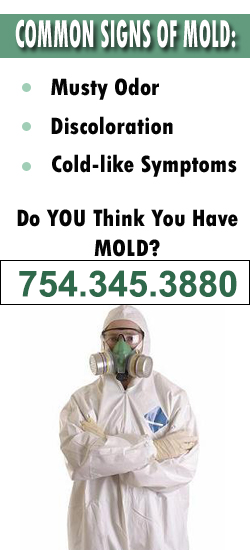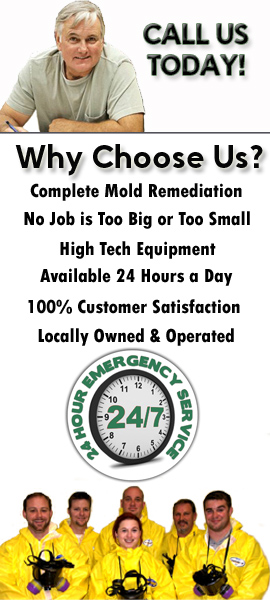When it comes to dealing with mold, it’s not a case of ‘out of sight, out of mind.’ We can’t stress enough the importance of professional mold inspection prior to remediation.
It’s like mapping out a treasure hunt; you wouldn’t start without a map, would you? With a professional mold inspection, we’re equipped to identify the different types of mold and their extent, find the root cause, understand the potential health risks, and implement measures to prevent future outbreaks.
But why do all these steps matter so much? Stick around and we’ll unpack this crucial process for you.
Identifying Mold Types and Extent
So how do we go about identifying the types of mold and determining their extent in a property? Well, it’s not as simple as it may seem. We can’t just take a quick glance and make an educated guess. It requires thorough professional inspection and testing.
We begin with a comprehensive visual inspection. We’re looking for visible signs of mold growth, water damage, dampness, musty odors, and other signs that may indicate a mold problem. We also use advanced equipment, like moisture meters and infrared cameras, to detect hidden moisture and mold behind walls, under floors, and in other hidden areas.
Next, we take samples for laboratory testing. This is where we can really identify the types of mold present. There are thousands of different mold species, and some are more harmful than others. The laboratory analysis tells us exactly what we’re dealing with.
Determining the extent of the mold problem is another crucial aspect of our job. We need to know how widespread the contamination is, and how deeply it has infiltrated the structure. This information guides us in developing an effective remediation plan.
It’s important to note that we’re not just looking at the present situation. We’re also trying to figure out the source of the mold problem to prevent future occurrences. We’re investigating potential water leaks, humidity issues, and inadequate ventilation. It’s a comprehensive approach that ensures we’re not just treating the symptoms, but also addressing the root cause.
Unearthing the Root Cause
While uncovering the types and extent of mold contamination is crucial, it’s equally important to dig deeper and find out what’s causing the mold growth in the first place. After all, it’s not enough to simply remove the mold; we need to address the source to prevent reoccurrence.
Mold needs three things to thrive: moisture, a food source like wood or drywall, and the right temperature. We’ll look for water leaks, condensation, poor ventilation, or humidity issues that create the perfect breeding ground for mold. It could be a leaking pipe hidden behind a wall, or it could be excess moisture in your basement or bathroom that’s not properly ventilated. Sometimes, it can even be due to flooding or roofing issues.
We’ll also check the building’s construction. Poorly designed structures can trap moisture, leading to persistent mold issues. Sometimes, it’s not a water issue at all, but a problem with the building’s HVAC system. A system that’s not functioning properly can create an environment that’s conducive to mold growth.
Once we’ve identified the root cause, we can recommend appropriate remediation strategies. These could include fixing leaks, improving ventilation, adjusting HVAC systems, or even remodeling parts of your property to prevent moisture buildup.
In a nutshell, unearthing the root cause is a critical step in professional mold inspection. It’s not just about cleaning up the mold, but about ensuring it doesn’t come back. Only by addressing the underlying issue can we truly say that a property is mold-free.
Health Risks Associated With Mold
Mold exposure, a silent health risk, can lead to serious health problems if left unchecked. It’s crucial for us to understand the potential health risks associated with mold exposure and why professional mold inspection is necessary before any remediation process.
Mold produces allergens and irritants that can cause reactions ranging from minor allergic symptoms to severe respiratory issues. We’re talking about symptoms like sneezing, runny nose, red eyes, and skin rash. More severe reactions can include fever, shortness of breath, and even the development of chronic lung illnesses. Furthermore, people with allergies, asthma, and weakened immune systems are at a higher risk of experiencing these problems.
Exposure to certain types of mold, such as black mold, can also lead to more serious health issues. This includes neurological problems like confusion, memory loss, and anxiety. In some cases, mold exposure has been linked to pulmonary hemorrhage, a severe bleeding of the lungs.
Clearly, the health risks associated with mold aren’t to be taken lightly. That’s why it’s so important to identify and mitigate any mold problems as quickly as possible. A professional mold inspection can help us spot the signs of mold that we might otherwise miss and take the necessary steps to address the problem before it becomes a serious health hazard. So let’s not underestimate the importance of a professional mold inspection. It isn’t just about maintaining the integrity of our buildings, it’s also about preserving our health and well-being.
Preventing Future Mold Outbreaks
To safeguard our health and properties, we must take proactive steps to prevent future mold outbreaks. It’s crucial to understand that mold thrives in damp environments, so it’s essential we limit the amount of moisture in our homes. This can be achieved by ensuring proper ventilation, fixing leaks promptly, and using dehumidifiers in high-humidity areas.
Regular cleaning is another key measure. It can help us spot potential mold growth early on, before it becomes a serious issue. We should be particularly vigilant in areas that are prone to dampness, such as bathrooms, kitchens, and basements. We must also ensure our homes have good airflow and sunlight, as these can inhibit mold growth.
Another important preventive measure is to use mold-resistant products while building or renovating our homes. These can include mold-resistant drywall, paint, and insulation. We should also be mindful of our belongings, as certain items can harbor mold if they’re not properly cared for. For instance, avoid storing clothing or papers in damp areas, and wash and dry items thoroughly before storing them.
Frequently Asked Questions
What Qualifications Should a Professional Mold Inspector Have?
We believe a professional mold inspector should be certified, experienced, and knowledgeable about mold types and health risks. They’ve got to understand mold remediation processes and the latest industry standards for mold inspection and removal.
How Much Does a Professional Mold Inspection Typically Cost?
We’ve found that professional mold inspection costs can vary greatly. They’re typically between $200 and $600, but they can exceed $1,000 if the inspector’s very thorough or if the property’s particularly large.
How Long Does a Professional Mold Inspection Usually Take?
We’ve found the duration of a professional mold inspection can vary. It usually takes 2-5 hours, depending on the property size. However, we’re keen on thoroughness, so we won’t rush the process.
Does a Professional Mold Inspection Include Remediation?
No, a professional mold inspection doesn’t include remediation. We’re just spotting the problem and identifying its extent. Remediation, or mold removal, is a separate service that’s typically done after inspection results are in.
Can I Stay in My House During a Professional Mold Inspection?
We’re often asked if you can stay in your house during a mold inspection. Yes, you can. We’ll ensure your safety is top priority while we conduct a thorough, non-invasive inspection of your property.




